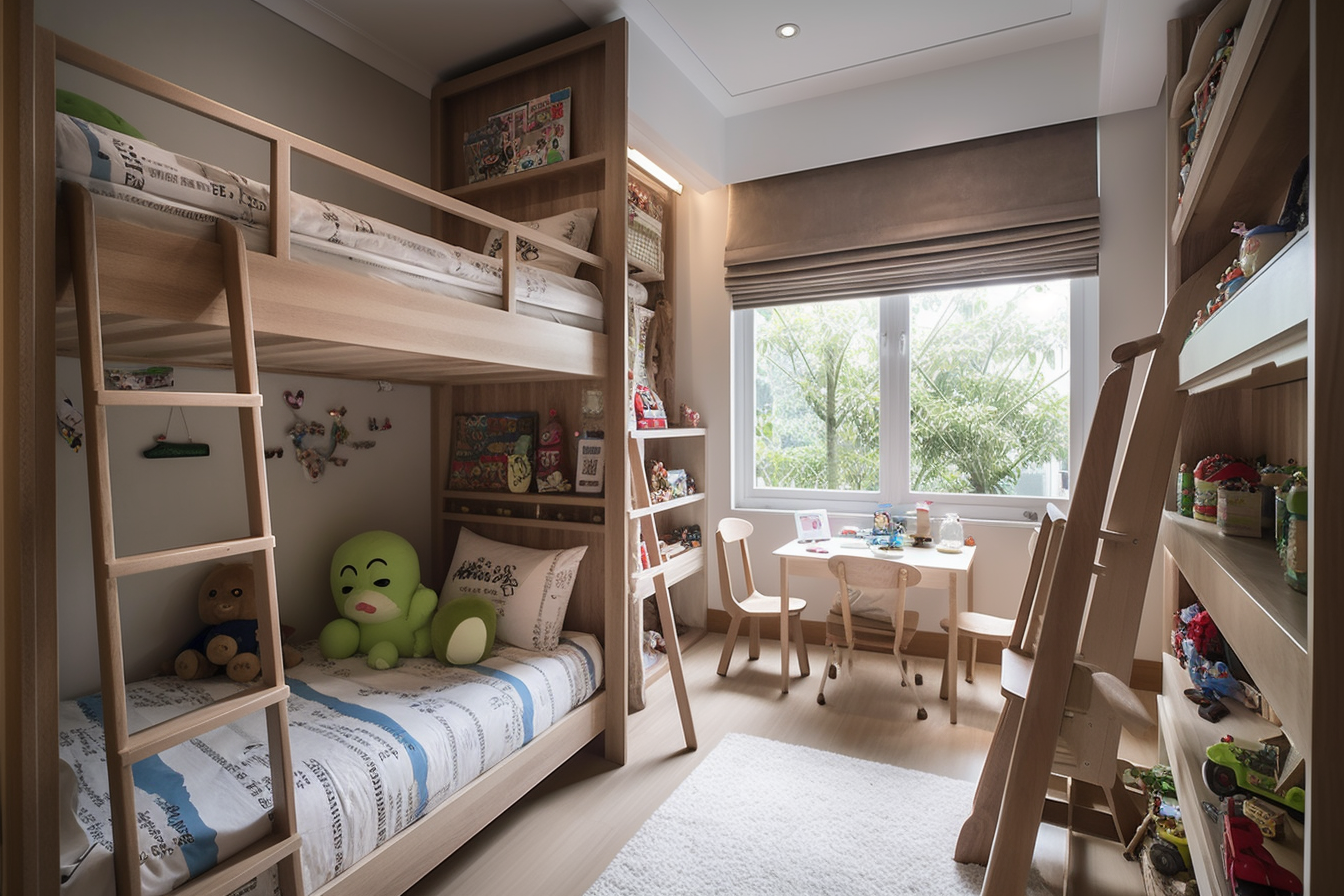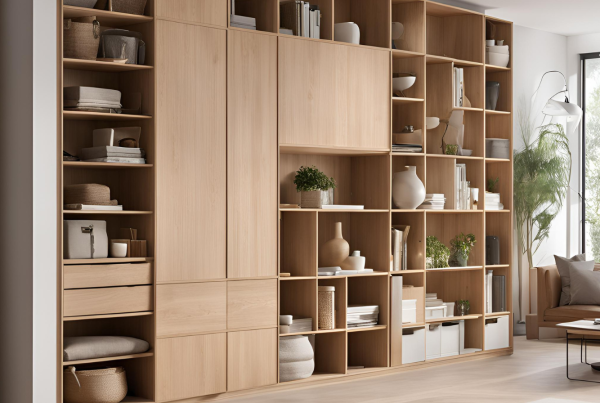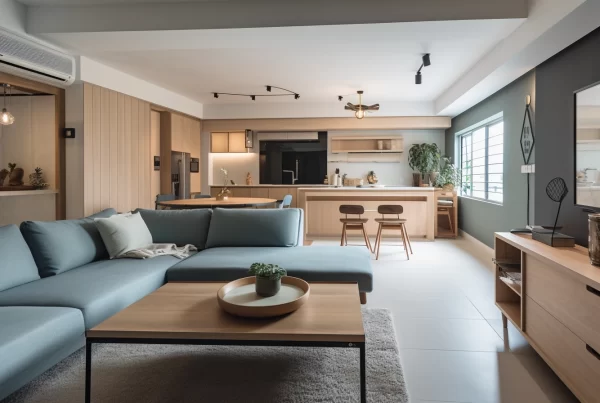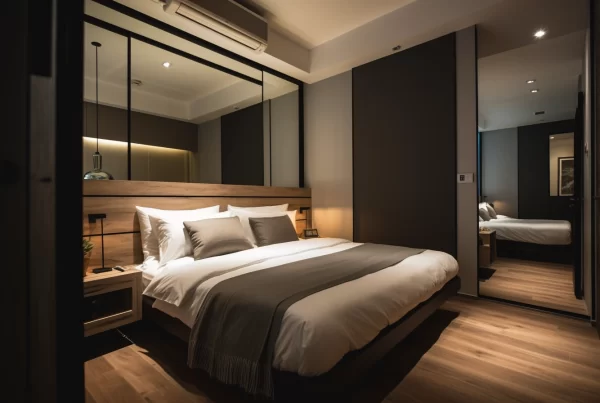Designing a bedroom for kids involves more than just choosing cute decor. It’s about creating a space that supports their growth, development, and overall well-being. Here are several key considerations to keep in mind when designing a bedroom for kids:
Safety First
When creating a child’s bedroom, safety should always be the top priority. Take proactive measures by securely anchoring furniture, particularly heavy items like dressers and bookshelves, to the wall to prevent any risk of tipping. Opt for age-appropriate furnishings that eliminate sharp edges or corners on furniture, reducing the likelihood of accidents. Additionally, prioritize the use of non-toxic, child-safe materials for all elements of the room, including furniture, bedding, and decor. This thoughtful approach not only ensures a secure environment but also contributes to the overall well-being of the child, allowing them to explore and enjoy their space without compromising safety.
Flexibility for Growth
Designing a child’s bedroom with flexibility in mind is key to accommodating their ever-changing needs. Choose furniture that can grow alongside the child, such as a convertible crib that transforms into a toddler bed or a desk with adjustable features for varying heights. Additionally, opt for a neutral color palette for larger furniture items, providing a timeless backdrop that can seamlessly adapt to different stages of development. To inject a sense of personalization and keep up with evolving tastes, incorporate pops of color through easily replaceable accessories like bedding, wall art, or decor. This approach ensures that the room remains versatile, allowing the space to evolve with the child’s preferences and interests over the years.
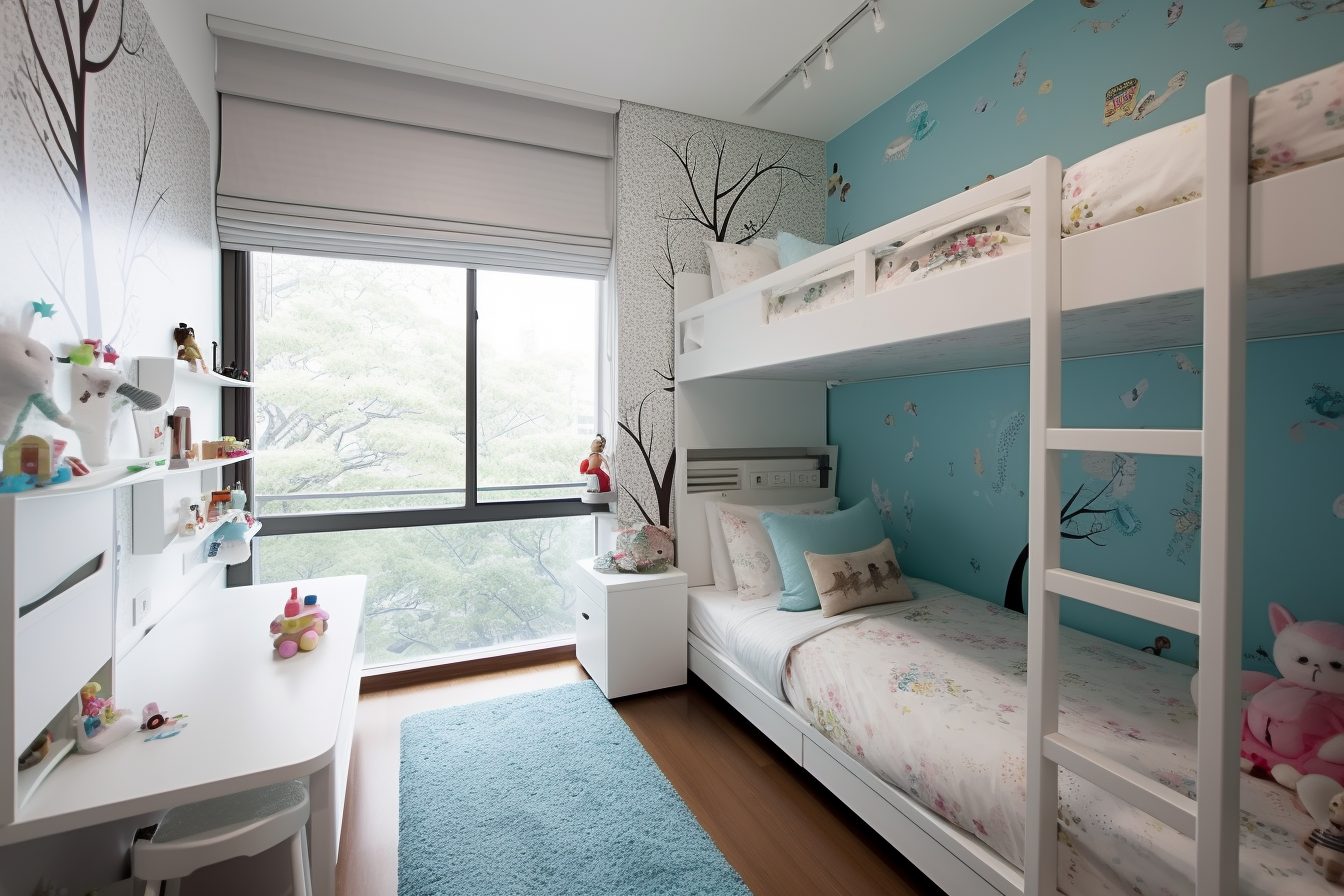 Storage Solutions
Storage Solutions
Efficient storage solutions are a fundamental aspect of designing a functional and organized child’s bedroom. The key is to integrate ample storage options that cater to the child’s needs and make tidying up a breeze. Incorporate child-friendly storage elements like bins, baskets, and low shelves that are easily accessible, encouraging the little one to take an active role in keeping their space neat.
In addition to standalone storage units, consider the use of multifunctional furniture that maximizes space. Opt for beds with drawers underneath to stash away toys, clothes, or bedding, providing a discreet and convenient storage solution. Ottomans that open up to reveal additional storage space serve a dual purpose, offering both seating and a spot to keep toys or other belongings out of sight. These smart storage choices not only contribute to an organized environment but also promote a sense of responsibility as children learn to manage and maintain their personal space.
Personalization and Creativity
Encouraging personalization and creativity in a child’s bedroom not only makes the space uniquely theirs but also fosters a sense of ownership and individuality. Involving the child in the design process is key; consider their interests, favorite colors, hobbies, or beloved characters when choosing decor elements. This collaborative approach ensures that the room reflects the child’s personality, creating a space where they feel comfortable and inspired.
To further nurture creativity, establish designated spaces within the room for various activities. Set up an art corner with easily cleanable surfaces, providing the perfect canvas for imaginative expression. Consider a reading nook equipped with comfortable seating and good lighting to cultivate a love for books and quiet moments of reflection. These personalized spaces not only contribute to a visually engaging and stimulating environment but also encourage the child to explore and develop their interests within the comfort of their own space.
Comfortable and Cozy
Crafting a comfortable and cozy atmosphere is essential when designing a child’s bedroom, as it directly impacts their well-being and quality of rest. Prioritize the selection of comfortable bedding, complete with a high-quality mattress and soft linens. Taking the child’s preferences into account when choosing blankets and pillows adds a personal touch, contributing to the creation of a warm and inviting sleeping environment.
In addition to bedding, lighting plays a crucial role in enhancing comfort. Ensure proper lighting for different activities by incorporating a bedside lamp tailored for cozy bedtime reading sessions. For more illuminating tasks like homework or play, introduce brighter overhead lighting to create a well-lit and functional space. Striking the right balance between comfort and functionality not only promotes restful sleep but also provides a versatile environment where the child can engage in various activities comfortably and with ease.
Durability
Prioritizing durability in the design of a child’s bedroom is a practical and sensible approach, given the often dynamic nature of their activities. When selecting furniture and flooring, opt for durable materials that can withstand the wear and tear associated with children’s play. Easy-to-clean surfaces are essential, considering the inevitable spills and accidents that are part of daily life.
In addition to furniture and flooring, bedding and upholstered furniture should also be chosen with durability in mind. Investing in washable fabrics and stain-resistant materials ensures that any messes or spills can be easily addressed, maintaining the longevity and aesthetics of these essential elements. This thoughtful consideration not only eases the burden of maintenance for parents but also ensures that the child’s environment remains functional and aesthetically pleasing despite the challenges that may arise in the course of everyday activities.
Age-Appropriate Decor
When selecting decor for a child’s bedroom, it’s crucial to prioritize age-appropriate choices that align with their developmental stage. For younger children, steering clear of small objects that could pose a choking hazard is paramount. Opt for larger, child-friendly decorations that not only capture their interest but also adhere to safety standards, promoting a secure environment for exploration.
To accommodate the ever-evolving tastes and interests of growing children, consider using removable wall decals or murals. These versatile decor options offer an easy and non-permanent way to update the room’s aesthetics as the child’s preferences change over time. This approach not only allows for flexibility in design but also encourages creativity and self-expression, turning the child’s bedroom into a dynamic space that can adapt to their evolving personality and interests.
Child-Friendly Layout
Designing a child-friendly layout for the bedroom involves thoughtful consideration of the child’s need for independence and exploration. Arrange the room to facilitate easy access to frequently used items, ensuring that everything is within the child’s reach. This not only promotes a sense of autonomy but also encourages them to take responsibility for their space.
To enhance the room’s functionality, ensure there’s ample open floor space for play and movement. A clutter-free area allows the child to engage in various activities comfortably, fostering creativity and physical activity. Consider incorporating storage solutions to keep toys and belongings organized, maintaining an unobstructed play area.
Additionally, delineate specific zones within the room for different activities. Designate a cozy corner for sleeping, a dedicated space for play, and a well-lit area for studying. This strategic layout not only optimizes the use of space but also establishes clear boundaries, creating an environment that supports the child’s various needs and activities. By fostering a child-friendly layout, the bedroom becomes a versatile and inviting space where independence, exploration, and functionality harmoniously coexist.
By keeping these considerations in mind, you can design a bedroom for kids that not only looks appealing but also provides a safe, comfortable, and stimulating environment for their overall well-being.


